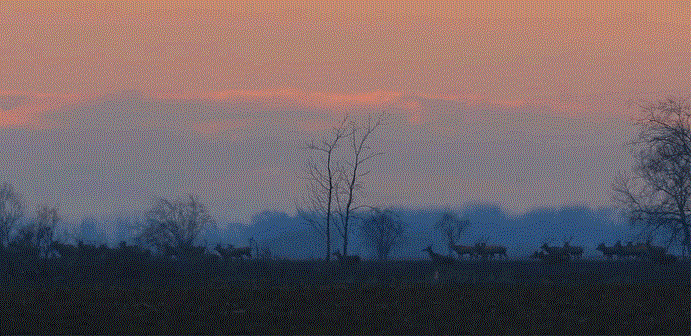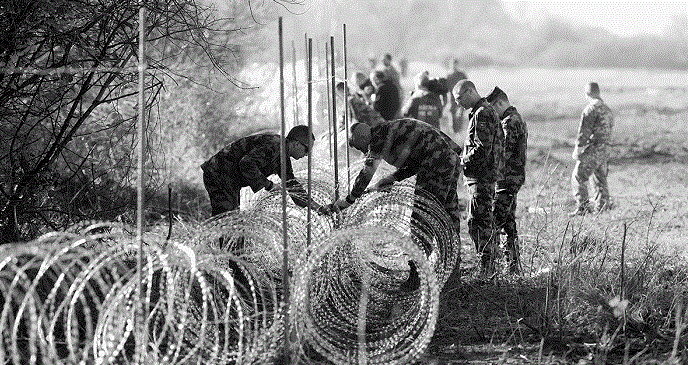The most widely reported victims so far are deer that died after becoming tangled in barbed-wire barriers along Croatia’s borders with neighbouring Slovenia and Hungary.
“Many of the reports have come from the media and from hunting clubs, whose members have noticed deer becoming tangled and dying in agony that can last for days, until someone comes along and finds them,” says Vedran Slijepčević, a zoologist at Karlovac University of Applied Sciences in Croatia.
But although photographs and reports of the entangled deer have stirred emotion and sympathy, the impacts on migrating or roaming animals of suddenly losing their usual territory could ultimately be more devastating.
Lynx effect
“For big populations such as roe and red deer, the problem is not so much in numbers but the suffering,” says Magda Sindičić, a researcher at the University of Zagreb. In contrast, she says, “for small, endangered populations, each individual is priceless”.
Sindičić has studied the genetic diversity of the remaining Dinaric lynx populations shared between Slovenia and Croatia, where numbers have dwindled to between 60 and 70.
“Lynx use habitats in both countries and cross the border daily to search for food and partners to mate,” she says. “The population is primarily endangered through inbreeding, so mating and producing fertile offspring is already a challenge for this population, and this fence will make it even harder as it will stop animals from migrating freely across the border.”
Slovenia began erecting the barbed-wire barrier – now 140 kilometres long – along the border with Croatia a few weeks ago near Dobova, a town on a refugee route. The fence now follows the border along the river Kupa through a region called Gorski Kotar in Croatia. This is one of the richest habitats for wildlife on both sides of the border, according to Sindičić.
Slijepčević says that the barrier is obstructing an annual migration of roe and red deer from high summer to low winter altitudes. It’s possible, he says, that the deer might become stuck in snow if they can’t make it to their usual lowlands.
These animals are in turn tracked by large predators, including lynx and wolves. Although the predators are less likely to get caught, they may get snagged if they try to scavenge deer from the wire.

Bear with me
Bears, too, could suffer if their territories suddenly contract because of the fences, warns Djuro Huber of the University of Zagreb, who has monitored the movement of about 20 bears through radio-tagging.
“A single bear can have a territory of as much as 1000 square kilometres,” he says. “They make big seasonal movements, showing up at different times in different areas.”
For example, he says, in late June this year, the same bear crossed the border into Slovenia and back three times. His tagging also revealed that more than half the bears he studied frequent habitat on both sides of the border.
In all, Huber estimates that there are probably 500 to 1000 bears in a tract of Europe that runs from Croatia in the north through the Balkans to Greece. “It’s all connected,” he says.
But the entire habitat is now being fragmented by fences between Macedonia and Greece, and Bulgaria and Greece, as well as those around Hungary and in Slovenia and Croatia.
The same fragmentation could be affecting four large wolf packs shared between Slovenia and Croatia, says Huber. “Now they’re partitioned, with half their range suddenly out of reach,” he says. “Gene flow will become much more of a problem.”
Schengen for carnivores
Huber and others are drafting a letter to the European Commission, pointing out the damaging impacts of the fences on nature. They will argue that the fences violate the EU Habitats Directive, which requires open conservation corridors for the transboundary movement of animals, and a 2008 agreement called the Large Carnivore Initiative for Europe, which contains guidelines for the transboundary management of large carnivores.
But what can be done in the meantime?
Slijepčević says there are media reports that people have been creating gaps in the fences for animals to get through. “But if animals come to the wire, they won’t find the passageways easily,” he says.
Huber agrees, adding that people will find ways to get through anyway. “People can get through the fence easily, using wire cutters or boards laid across the wire, but animals can’t,” he says.
Huber and Slijepčević agree that the only solution that would work for the animals would be to remove the fences altogether.
More about:
















































